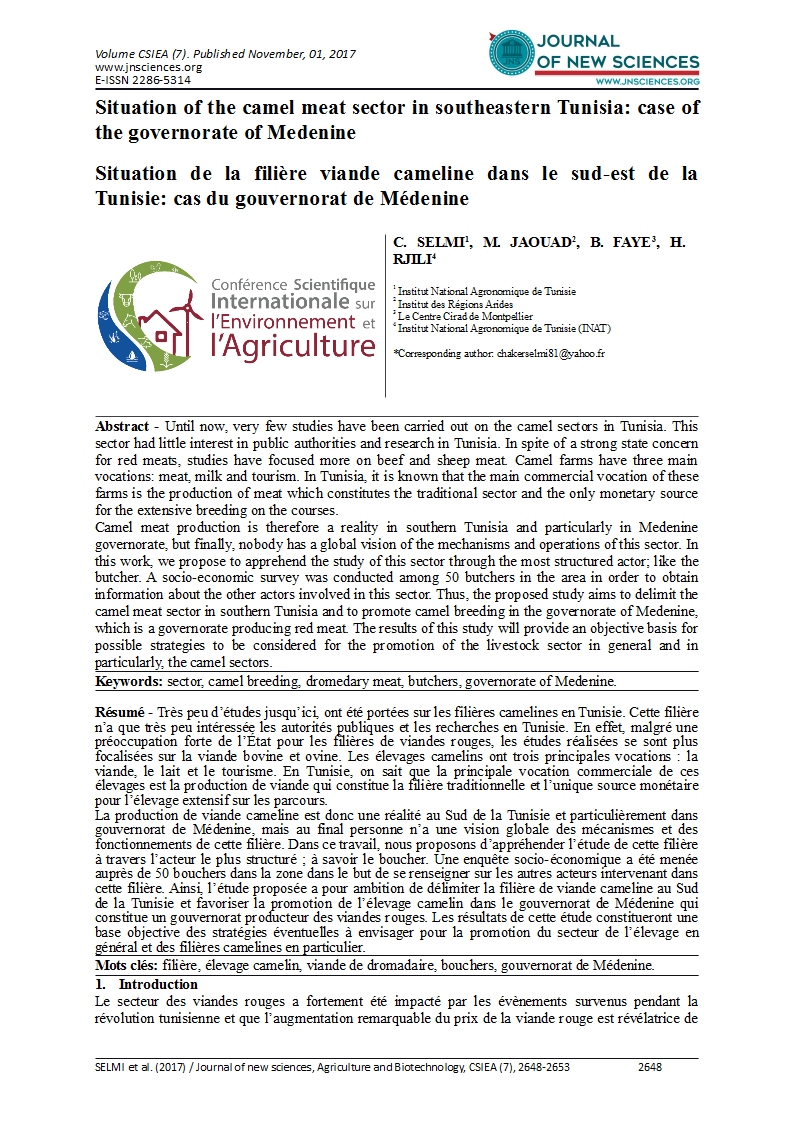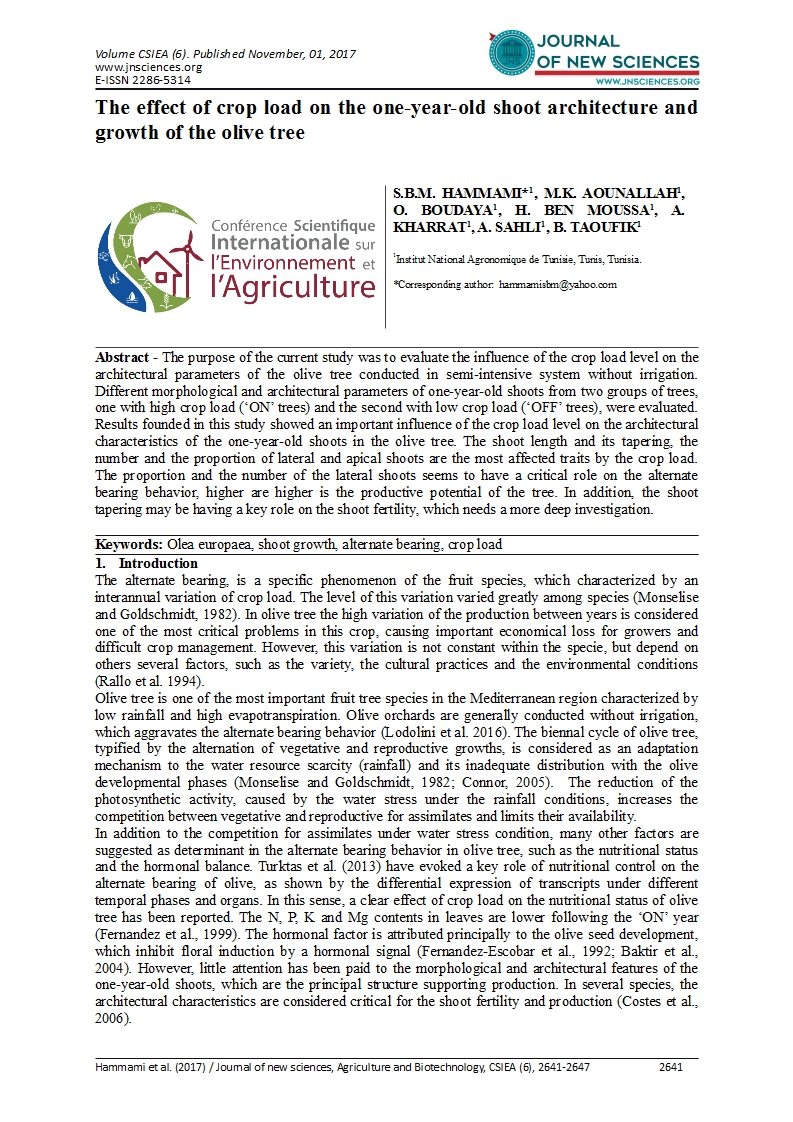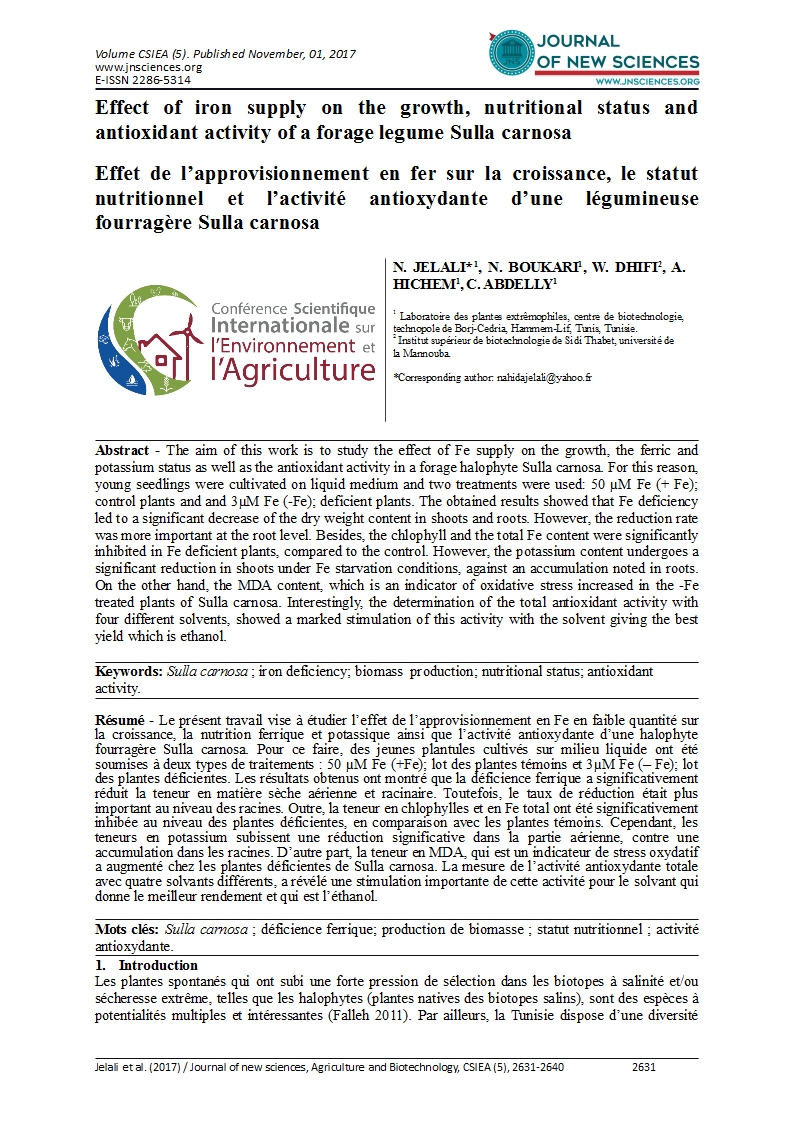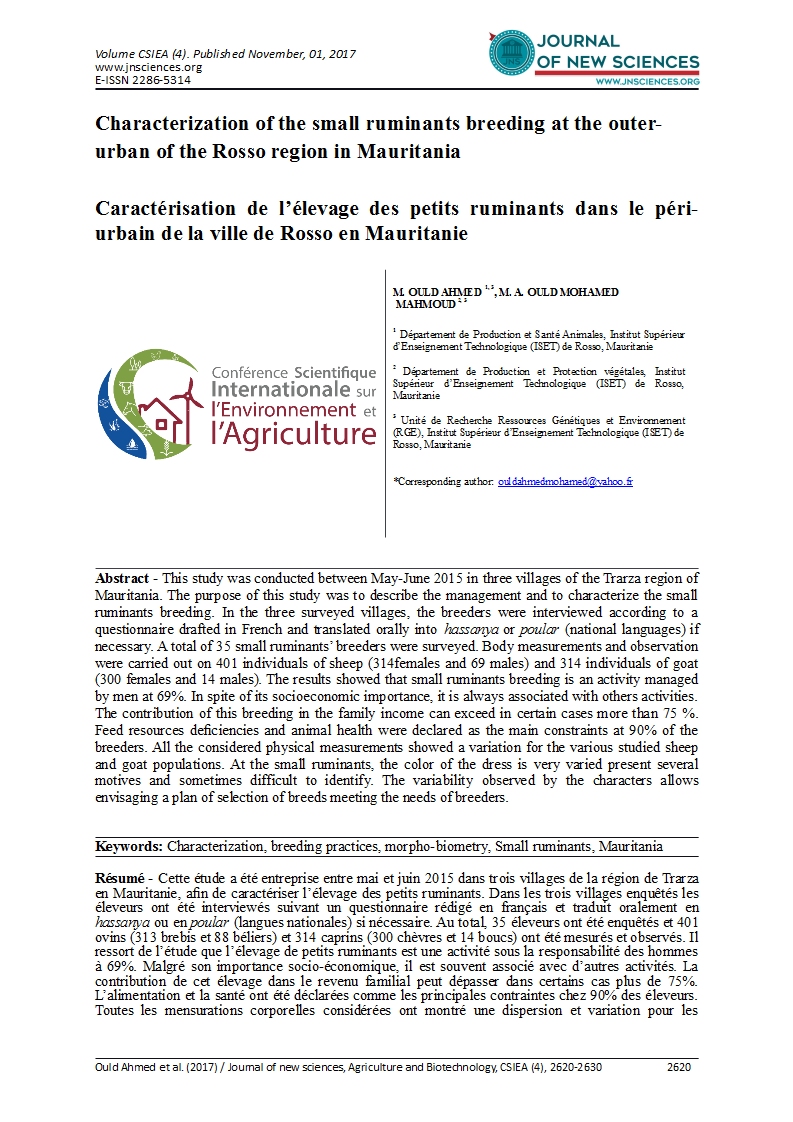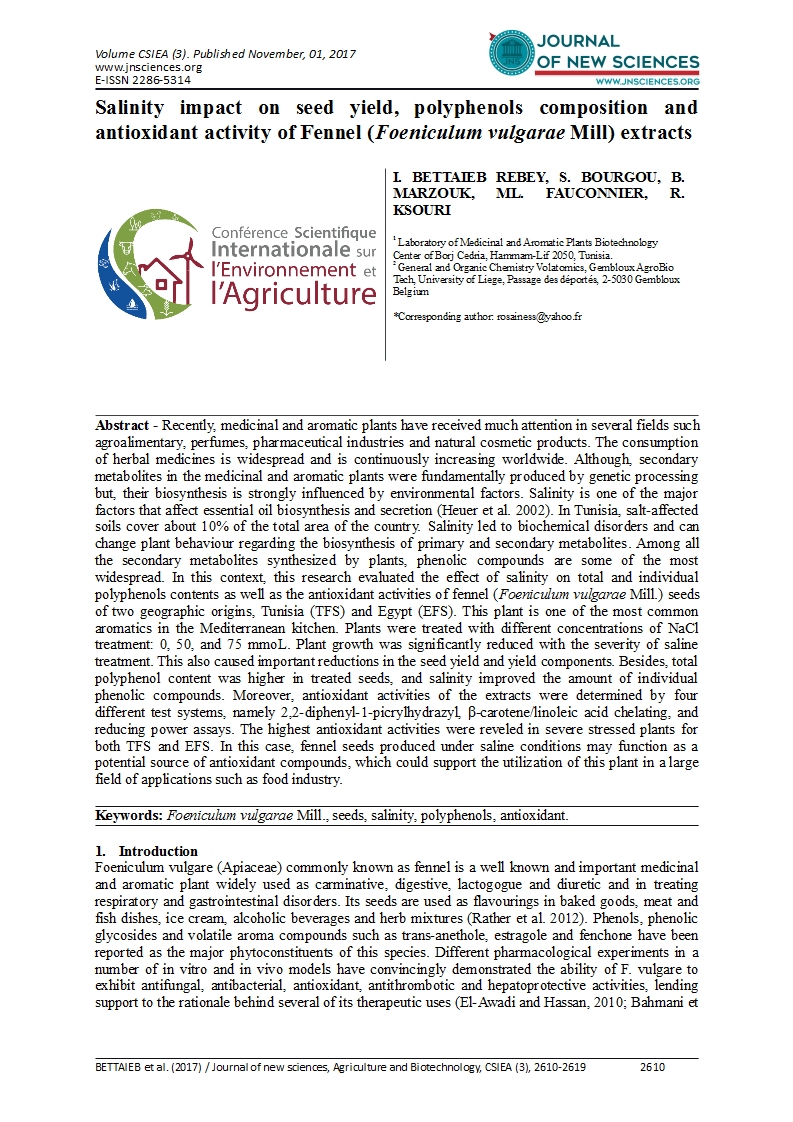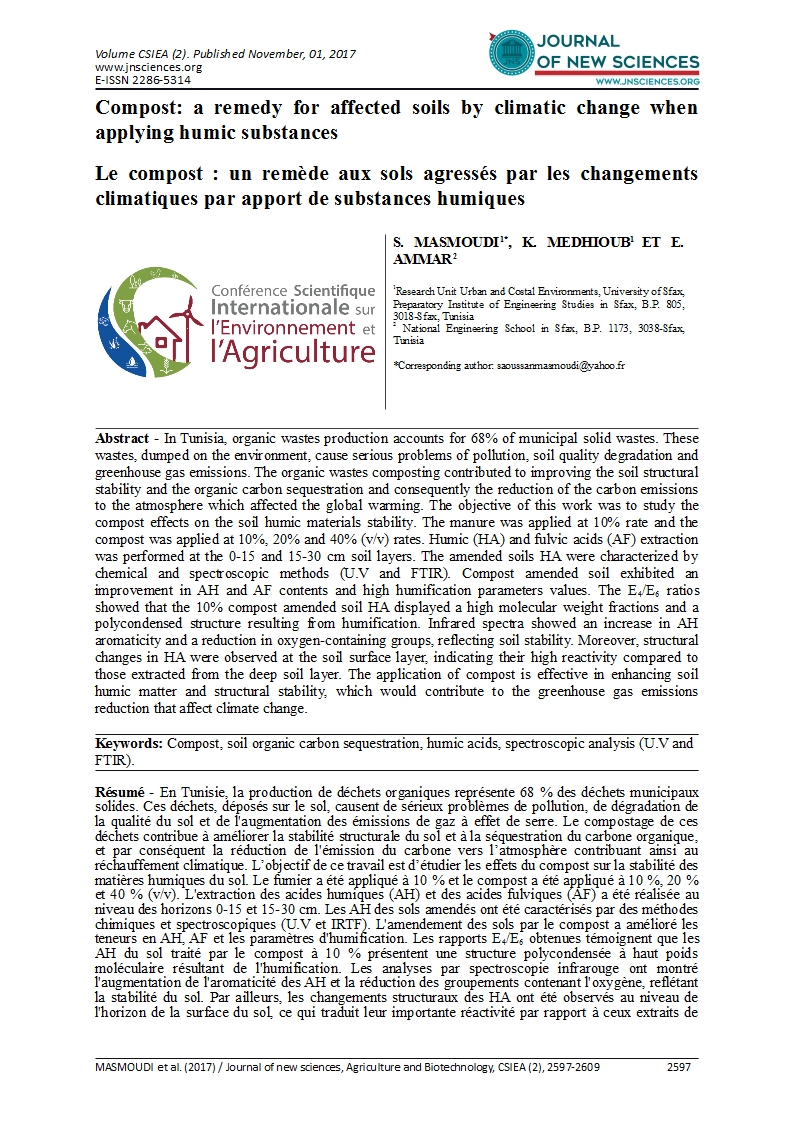- Category: Volume spécial (Conférence CSIEA 2017)
- Hits: 11599
Effects of Climate Change on Durum Wheat Productivity in Tunisian Semi-arid Zone
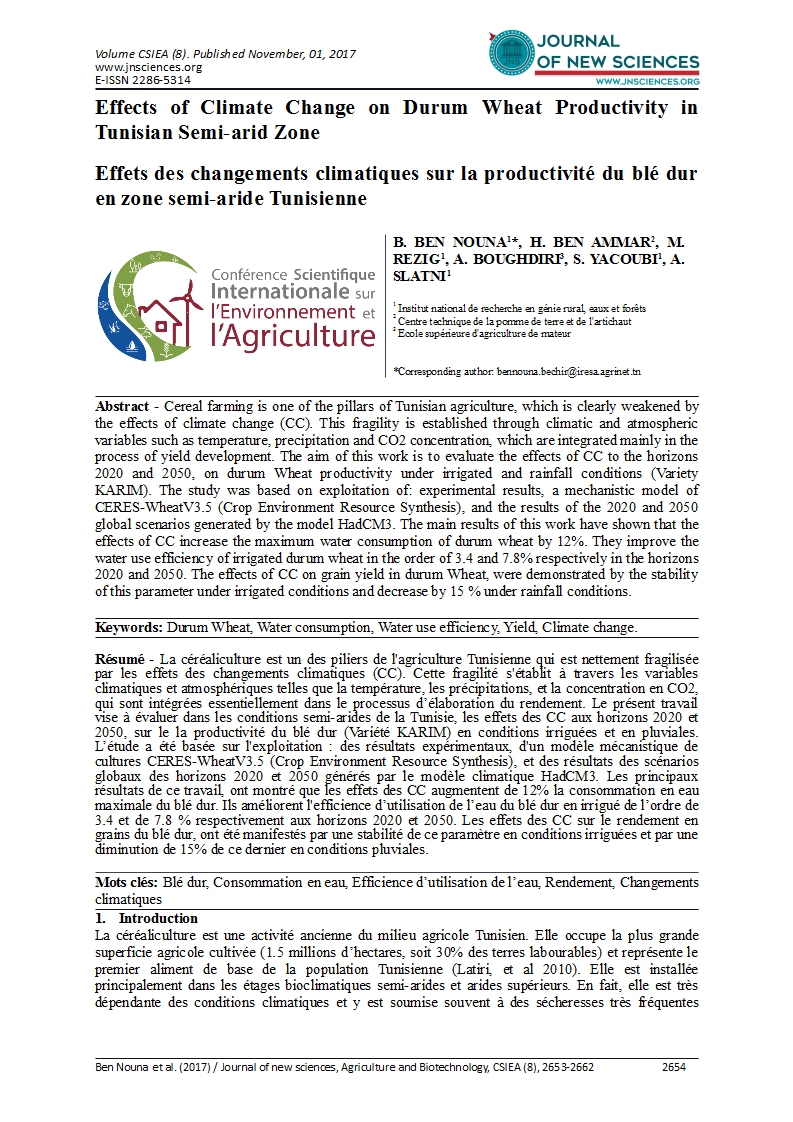
Effets des changements climatiques sur la productivité du blé dur en zone semi-aride Tunisienne
|
|
B. BEN NOUNA1*, H. BEN AMMAR2, M. REZIG1, A. BOUGHDIRI3, S. YACOUBI1, A. SLATNI1
1 Institut national de recherche en génie rural, eaux et forêts 2 Centre technique de la pomme de terre et de l'artichaut 3 Ecole supérieure d'agriculture de mateur
|
Abstract - Cereal farming is one of the pillars of Tunisian agriculture, which is clearly weakened by the effects of climate change (CC). This fragility is established through climatic and atmospheric variables such as temperature, precipitation and CO2 concentration, which are integrated mainly in the process of yield development. The aim of this work is to evaluate the effects of CC to the horizons 2020 and 2050, on durum Wheat productivity under irrigated and rainfall conditions (Variety KARIM). The study was based on exploitation of: experimental results, a mechanistic model of CERES-WheatV3.5 (Crop Environment Resource Synthesis), and the results of the 2020 and 2050 global scenarios generated by the model HadCM3. The main results of this work have shown that the effects of CC increase the maximum water consumption of durum wheat by 12%. They improve the water use efficiency of irrigated durum wheat in the order of 3.4 and 7.8% respectively in the horizons 2020 and 2050. The effects of CC on grain yield in durum Wheat, were demonstrated by the stability of this parameter under irrigated conditions and decrease by 15 % under rainfall conditions.
Keywords: Durum Wheat, Water consumption, Water use efficiency, Yield, Climate change.
Résumé - La céréaliculture est un des piliers de l'agriculture Tunisienne qui est nettement fragilisée par les effets des changements climatiques (CC). Cette fragilité s'établit à travers les variables climatiques et atmosphériques telles que la température, les précipitations, et la concentration en CO2, qui sont intégrées essentiellement dans le processus d’élaboration du rendement. Le présent travail vise à évaluer dans les conditions semi-arides de la Tunisie, les effets des CC aux horizons 2020 et 2050, sur le la productivité du blé dur (Variété KARIM) en conditions irriguées et en pluviales. L’étude a été basée sur l'exploitation : des résultats expérimentaux, d'un modèle mécanistique de cultures CERES-WheatV3.5 (Crop Environment Resource Synthesis), et des résultats des scénarios globaux des horizons 2020 et 2050 générés par le modèle climatique HadCM3. Les principaux résultats de ce travail, ont montré que les effets des CC augmentent de 12% la consommation en eau maximale du blé dur. Ils améliorent l'efficience d’utilisation de l’eau du blé dur en irrigué de l’ordre de 3.4 et de 7.8 % respectivement aux horizons 2020 et 2050. Les effets des CC sur le rendement en grains du blé dur, ont été manifestés par une stabilité de ce paramètre en conditions irriguées et par une diminution de 15% de ce dernier en conditions pluviales.
Mots clés: Blé dur, Consommation en eau, Efficience d’utilisation de l’eau, Rendement, Changements climatiques

